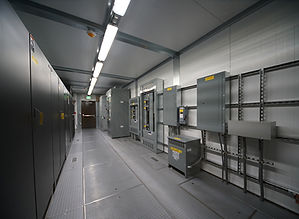
Most of today’s cogeneration systems and demand response applications that have less than one megawatt in capacity are located at unstaffed sites. Typically, these applications are expected to run with little human intervention and limited planned maintenance. In a perfect world, that would be all that was necessary. But when you are dealing with moving parts and machinery, things can go wrong when you least expect it. That’s where our GenView Control System comes in. We can monitor your system from anywhere on Earth.
LEARN MORE
How it works:
The jacket water from the engine-generator “set” and / or exhaust cooling circuits are fed through heat exchangers to transfer the waste heat from the engine to a hot water holding tank.
That hot water is stored and used to keep the greenhouse warm. Catalysts can be used to remove carbon monoxide and a urea-based SCR system is employed to reduce NOx to just a few PPM. The result is Co2 exhaust gas so clean it can be used in the greenhouse as fertilizer to boost yields.
Biogas is a form of natural gas produced by the breakdown of manure, food waste, plant material, sewage or landfill decomposition. There are several methods of breaking down these substances including compaction, anaerobic digestion, pyrolysis and gasification. The resultant product is a mixture of methane and carbon dioxide. This mixture can be prepared for numerous uses including transportation, power generation, natural gas production via biogas upgrading and ethanol production.
Critical Infrastructure Modules can go anywhere including rooftops, raised platforms, or as an instant build-out in a current facility. This allows you to increase your productivity or add new technology in a highly secure, isolated location. CIM’s have short lead times and are Built To Suit.





